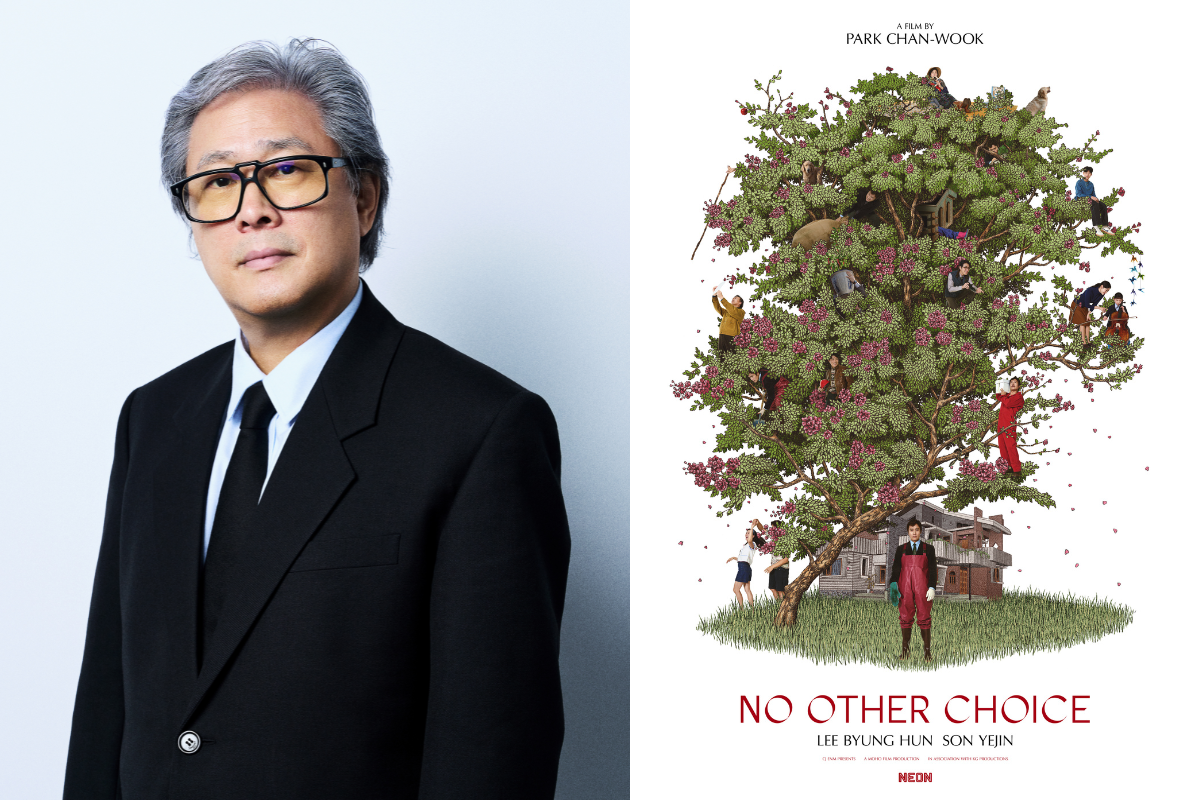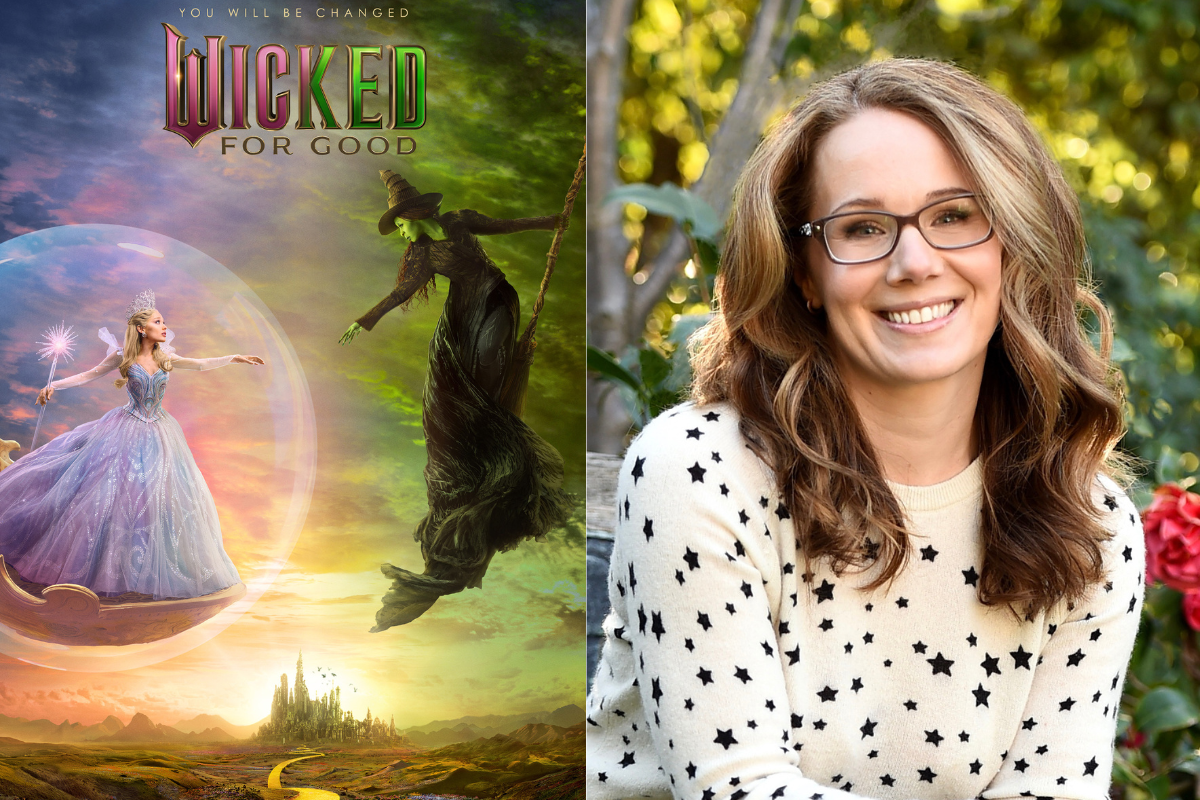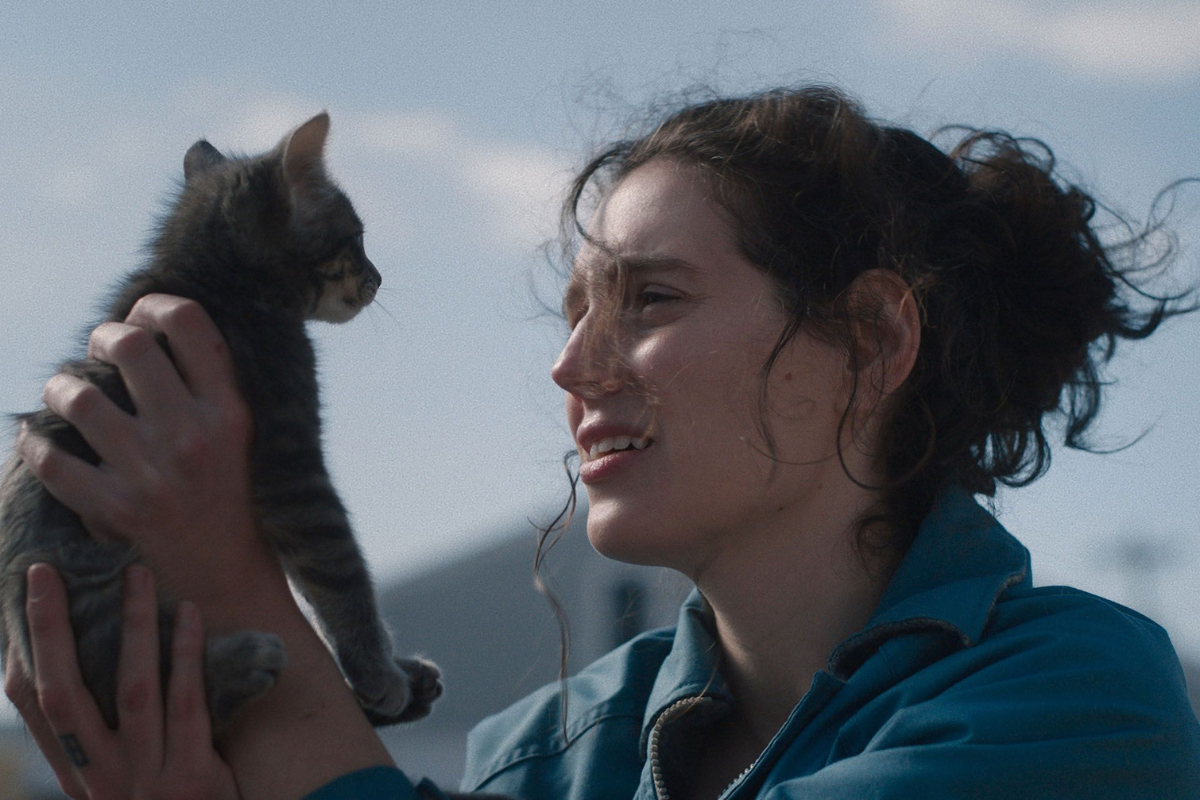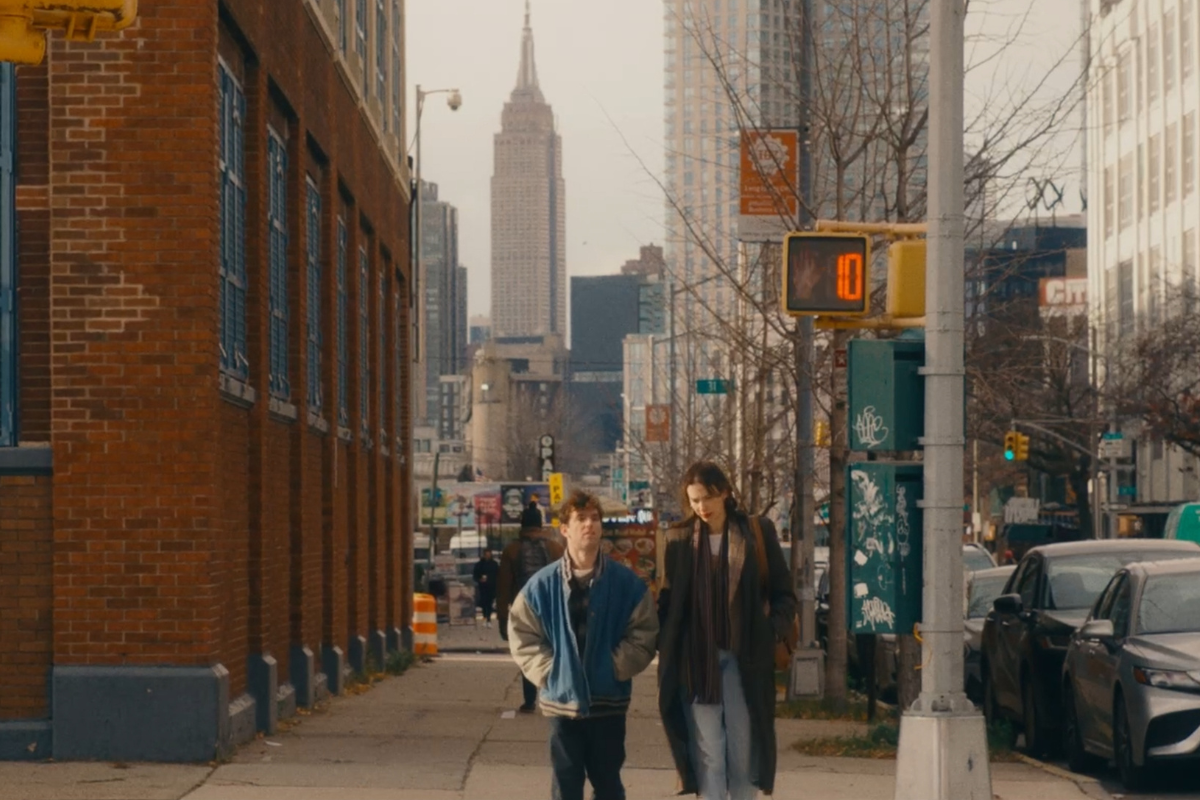INDIE SPOTLIGHT: An Interview with ‘Manifest West’ Filmmakers Joe Dietsch and Louie Gibson
Manifest West is a coming-of-age story told through the eyes of a young girl whose family spirals out of control after they move off the grid. In 91 minutes, you’re on…
Manifest West is a coming-of-age story told through the eyes of a young girl whose family spirals out of control after they move off the grid.
In 91 minutes, you're on the edge of your seat, at moral qualms with yourself and what this family in Manifest West is up against both from internal and external factors. And the story is told through the vulnerability and innocence of a young girl, witnessing the good, the bad, and the ugly.
Joe Dietsch and Louie Gibson, the creative minds behind this film, both shared duties as director and writer on the film, recently spoke with Script about how the story idea came to fruition, the inner workings of their creative unity, writing characters, and their filmmaking journeys. Plus, they both share advice for budding first-time multi-hyphenate filmmakers.
This interview has been edited for content and clarity.
Sadie Dean: You both are collectively wearing multiple creative hats on this film but also somehow manage to have a unified vision that is carried through this film. Where did the seed of this story come from?
Joe Dietsch: I think Louie and I had been talking about a lot of these sorts of government standoffs that had happened in the United States in the 1990s. And looking at those stories, and trying to sort of understand who the people were in those stories, Ruby Ridge, scenarios like that, and sort of looking at who are these people? What led them to that point? And these people, they weren't antagonists, they were people who were trying to sort of go out and live a life that was at odds with what society expected of them. And then they made a series of increasingly bad choices that led them to this place of violence, but that's not how it started. What's that world? And what's the story we can tell in that world?
We’d landed on the idea of telling the story through the eyes of the children, because if you tell the story through the eyes of the adults, it's sort of a very linear progression. The kid has so much mystery in it that, to us, it was more interesting to see it through the kid’s perspective of someone trying to kind of understand what their parents are doing. And putting the audience in the child's shoes instead of the parents.
Sadie: Right and you’re weaving different issues throughout that world and in the nucleus of the family, like mental health and so forth. How did you approach that?
Louie Gibson: Going off what Joe said, what was interesting to us was looking at that grander story or the backdrop of the US government and what it looks like for this family with this dream and true autonomy, bumping up against the powers that be, the highest it can go. But looking at what is a very human, kind of small family drama that we can tell and how do we drop that in that backdrop? So, I think as far as interweaving, also going off of what Joe said, with telling it through the kid’s perspective, it gave us some creative freedom to kind of move around and with the mental health, like what we wanted to show and what we didn't want to show. And obviously, the father's got his own stuff going on too, he's sick in his own way. It was just looking at the most human story we can tell there, and how that worked.
It kind of just flowed out, to be honest. Once we started doing it, it was just like, ‘Well, what would the family be doing? And what's this next scene?’ Joe and I have talked about this before, we've worked together for a long time, but I think writing this somehow just flowed the easiest out of anything we ever did, because you were telling a story with a family and you didn't have to get caught up in too much logic.
Sadie: What’s so interesting about this film is how you leave it up to the audience on which moral high ground to choose – there’s so much at stake for this family, but you guys have a great push and pull with outsiders and how they coincide with core family. And at the end of the day, it all lands on Riley – what was your approach to laying the groundwork for her character development?
Joe: I think in writing the character, we sort of just looked at a lot of our own childhood experiences - not being in sieges with the federal government [laughs] but what is it like to be a kid? What do you remember from that period of your life? And just making her a nuanced character as much as we could. We've had people ask about choosing to write a girl or a boy. And I think that it wasn't really super gender specific, but once we had decided that Riley was a girl, I think we definitely wanted to include scenes like her smoking her first cigarette and things like that, that I think you get to see a lot with little boy characters in movies and get the sort of fun rough around the edges stuff. But I think little girl characters in movies are too often kind of relegated to being like a princess character. And I think girls are doing all the same stuff that little boys are doing, and in a lot of way, it's the same experience.
Sadie: Going back to you both wearing multiple creative hats, how do you divvy up your responsibilities, especially as directors on set?
Louie: It depends on day to day, but I think that because we take it from A to Z, we've talked so much about it, that we have a very similar vision for what we need. So, it's just whatever it needs on the day. If Joe's setting up a shot, and I have to be blocking with the actors, and then once we're shooting, he may say, ‘Hey, can we try this?’ We just bounce off each other. It's pretty symbiotic I would say.
Joe: When you're co-directing a project, it's just really essential not to contradict the other person. It's about building on ideas. Not you saying, ‘That doesn't work. Try this.’ It's sort of like, ‘OK, we tried that. Now, let's also try this.’ And then sort of building layers onto a scene rather than tearing something down and then trying to build it back up again, because I think for actors, that can get very frustrating when you're taking direction from two people who are trying to pull you one way or the other; it has to be about moving towards a common goal, and a scene creatively and that just comes from years of working with someone else and kind of knowing what that shorthand is and how to achieve that.
Sadie: Do you guys do a lot of prep work ahead of time in terms of storyboarding and a shot list, especially since you’re both editing?
Joe: Yeah, we storyboarded I think every shot of the movie, and then on set it sort of changed anyway, but at least you have that framework that you can base something off of. There's a lot of prep that goes into it, which I think in this case, we had done a lot of prep, and then going into shooting, we were shut down, because we were about to go shoot and then the COVID shutdowns happened. So, then we had two months to do more storyboarding and more prep. We had a lot of prep going into it. [laughs]
Sadie: Taking a step back, how did you two connect at Chapman and become creative brothers in arms?
Louie: We met during my first year there. Joe lived with some other guys who I'd met. And then we just kind of kept the friendship, and we had a couple of projects that we were trying to work on while we were there when we were in school. And then it's once we came out of school, we then we really started to work together all the time. I've known this guy for probably 15 years.
Joe: Somehow, something like that. We're getting old now. [laughs]
Louie: [laughs] Yeah, but it's been great. Some of the other guys we went to school with, we still work with like the producer on the movie, Bryson [Pintard], we met him down there. We kept the relationships alive.
Sadie: What kind of stories are you interested in tackling?
Louie: I would say in general; I think it has to have some meaning, it has to resonate in some way, that's like the most obvious thing to say, but that's not always the case. Even I think with something that's action-packed and fun, I think it's always important, if you can, put some human element in that. I think that's what makes people hang on to it. So, for me, it's that.
Joe: I think it's the stories, it's the characters, finding a world that you want to live in for the time that it's going to take to make a movie. From the time that you start writing something, to getting it funded, to getting it shot, to sitting in edit, to recutting it, selling it, to rolling it out, you're sitting with a movie for three years or more. I've had projects that we've been sitting with for longer than that. So it's something that has a world and that's appealing because it's going to be part of your life for the duration of the project. It's got to be characters that you connect to creatively, and a sort of a space that's exciting, and the idea of having to attach yourself to a project that doesn't resonate with you and then be trapped with it for years of your life it's just not worth it.
Sadie: When sitting down to write this script, were you writing to budgetary constraints or location?
Joe: I think on this project, specifically, you’re writing it understanding that you're going to have to go out and shoot it. We were writing specifically to a location that we knew existed, we still had to kind of write it and then go out and find places that matched our vision. But in general, I think in writing projects that you know will be independent, you're keeping your vision within a range, but also, hopefully, you're trying to tell a story that inherently fits within what the constraints the production might be.
Sadie: When writing these characters, did you already have your actors in mind?
Louie: Yeah, for a couple of them. We started writing and we knew, we said, for the parents, we wanted to Annet [Mahendru] who is my wife, and Milo [Gibson] is my brother. And we had another project that we wanted them in, it fell through a few years ago, and they were both free at that moment. And we said, ‘Hey, this would be great. It could be fun to go do this.’ And then from there, we built out the rest of the cast.
Sadie: Once they were on board, did you go back to refine their voices for the characters? Especially, Annet, she's phenomenal in how her character is processing everything.
Louie: Joe could probably tell you too, I mean, the way she works, she likes to know a lot. And she asks a lot of questions specific to what she had to play, because you don't want to get it wrong. We were happy with that. And she did a fantastic job.
Joe: We talked a lot with them about who these parents were. And then that sort of informed choices on set. We had had similar conversations with Lexy Kolker who plays Riley, finding who she is in various moments and helping track everyone's kind of emotional arcs. And I think that on set also there was some freedom to try stuff out and then experiment a little bit, especially in some of the more emotional scenes. There wasn't so much rewriting probably as having conversations, and sort of coming to a collective agreement about the emotional realities of all these characters.
Sadie: Any advice for first-time writer-directors tackling their first independent feature film?
Joe: I'll throw out a real nuts and bolts one - learn how to edit. Even if you're not going to edit professionally, having a background in editing for an independent film, I think is fairly essential. Because you don't have the freedom to just shoot unlimited coverage and figure it out later. You have to have an understanding while you're shooting of where's this going to end up on the other side. The only thing that really matters is what ends up in a cut eventually. So, having that understanding of post-production, I think makes a big difference with how you can allocate your resources on set.
Louie: I would say be wary of people who promise you the world because they're usually full of it. Anyone who tells you money is easy is lying.
Manifest West is now available on Digital.
Learn more about the craft and business of screenwriting from our Script University courses!
Sadie Dean is the Editor of Script Magazine and writes the screenwriting column, Take Two, for Writer’s Digest print magazine. She is also the co-host of the Reckless Creatives podcast. Sadie is a writer and filmmaker based in Los Angeles, and received her Master of Fine Arts in Screenwriting from The American Film Institute. She has been serving the screenwriting community for nearly a decade by providing resources, contests, consulting, events, and education for writers across the globe. Sadie is an accomplished writer herself, in which she has been optioned, written on spec, and has had her work produced. Additionally, she was a 2nd rounder in the Sundance Screenwriting Lab and has been nominated for The Humanitas Prize for a TV spec with her writing partner. Sadie has also served as a Script Supervisor on projects for WB, TBS and AwesomenessTV, as well as many independent productions. She has also produced music videos, short films and a feature documentary. Sadie is also a proud member of Women in Film.
Follow Sadie and her musings on Twitter @SadieKDean







